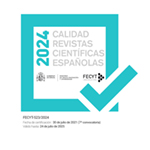Los aymaras del altiplano peruano en el bicentenario: representación y participación política
Resumen
El presente trabajo, sobre los aymaras del altiplano peruano en el bicentenario de la independencia del Perú, tiene como objetivo analizar e interpretar la situación de representación y participación política actual de la población asentada en el sur del país. En primera instancia se describe la realidad de los aymaras; en segundo lugar, se analiza la representación en los diferentes espacios de poder; en tercer lugar, se interpretan los procesos de homogenización y de resistencia. Se concluye que, a pesar de los procesos de exclusión y homogenización que se vivieron, aún siguen vigente sus prácticas tradicionales como cultura. Si bien no se evidencia la representación política legitima del pueblo aymara en el bicentenario, ello constituye en una agenda pendiente por afrontar desde sus diferentes actores y sectores
Descargas
Descarga artículo
Licencia
La Revista Española de Antropología Americana, para fomentar el intercambio global del conocimiento, facilita el acceso sin restricciones a sus contenidos desde el momento de su publicación en la presente edición electrónica, y por eso es una revista de acceso abierto. Los originales publicados en esta revista son propiedad de la Universidad Complutense de Madrid y es obligatorio citar su procedencia en cualquier reproducción total o parcial. Todos los contenidos se distribuyen bajo una licencia de uso y distribución Creative Commons Reconocimiento 4.0 (CC BY 4.0). Esta circunstancia ha de hacerse constar expresamente de esta forma cuando sea necesario. Puede consultar la versión informativa y el texto legal de la licencia.









